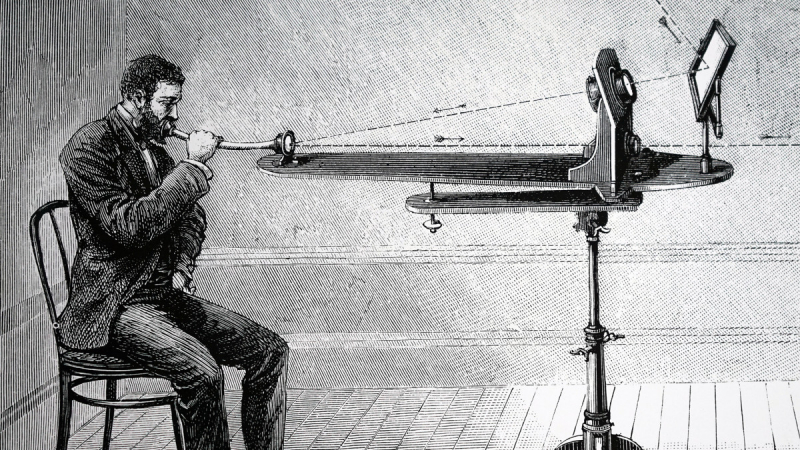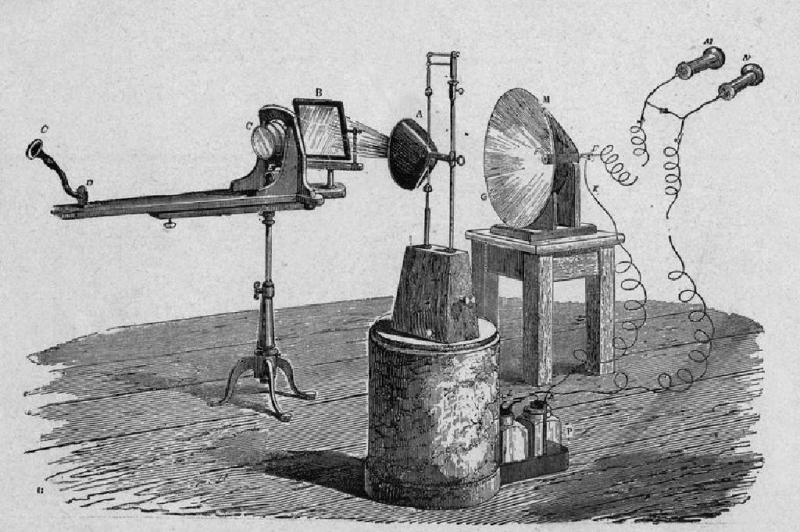Bell developed a wireless telephone
On June 3, 1880, just four years after receiving the telephone patent, Alexander Graham Bell was speaking wirelessly on top of the Franklin School in Washington, DC, sending his words over 213 meters on a mirror and a sunbeam. Bell called it the "photophone," calling it his most significant invention.
The transmitter focused light onto a parabolic mirror, much like a telephone, and the receiver picked it up. However, unlike a telephone, this system did not use electrical signals to communicate; instead, light was focused onto a parabolic mirror. When you spoke, the mirror shook in response, modulating the sunbeam and altering the amount of light that arrived at the receiver. When the light shone on the light-sensitive selenium, the light once more took on the form of speech.
Bell wanted to name his second daughter after the photophone because he was so happy with it, but fortunately for her, that didn't happen. Additionally, the photophone wasn't exactly a resounding success. Bell explained how inclement weather could prevent the photophone from working in that same letter to his wife: “Mr. Tainter and I have been mortified that cloud and rain have prevented us from making experiments with our huge diaphragm-mirror photophonic transmitter.” The photophone wasn't very effective when lit by a kerosene lamp, and by the late 1890s, a young Italian inventor named Marconi was testing a different wireless system that would essentially render the photophone project obsolete.
Bell's favorite invention, however, experienced a small comeback in the late 20th century when fiber optics brought back light-transmitted telecommunication. In order to commemorate the 100th anniversary of an invention that continued to live up to its creator's enthusiasm long after he had passed away, the Smithsonian was dusting off the photophone Bell had donated in 1980.










